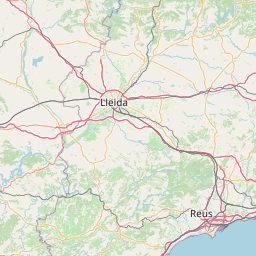Actuacions per a millora d'eficiència energètica en un edifici d'oficines
Tutor / Supervisor
Student
Brufau Torrents, Oriol
Document type
Bachelor thesis
Date
2020
rights
Restricted access - author's decision
Publisher
Universitat Politècnica de Catalunya
UPCommons
Abstract
Objectiu: La Directiva 2012/27/UE del Parlament Europeu i del Consell, de 25 d'octubre de 2012, relativa a l'eficiència
energética, estableix uns criteris que, a partir de 31 de desembre de 2020, seran d'aplicació obligatòria per tots els
edificis de nova construcció a fi i efecte que tinguin un consum d'energia gairebé nul. Tamateix, la reconversió i
millora de l'eficiència energética del parc immobiliari existent esdevé una mesura també essencial per garantir
millores, atès que aquest esdevé, per proporció i tendencia, a ser majoritari.
Així, el document que s'ha elaborat, evalua energèticament un edifici existent amb ús d'oficines i adoptar mesures
actives i passives per millorar-ne l'eficiència.
Mètode: S'ha efectuat un estudi de càrregues tèrmiques de l'edifici actual a través del software Clima VP, un estudi
de potències elèctriques de la lluminària, a través del software Dialux Evo, i de la resta de maquinària i estris existents,
així com de la demanda d'energia solar térmica per ACS necessària, i s'han adoptat les mesures actives i passives, en
coherencia amb l'edifici estudiat, per millorar el consum i demanda energètica.
Resultat: La demanda energética actual de l'edifici és de 327.460,7 kWh/any, que implica unes emissions de 136.87
TnCO2/any. Amb les millores adoptades, la demanda energètica es redueix 48.546,34 kWh/any, que implica un
consum total anual de 278914,38 kWh/any i emissions per valor de 74,897 TnC02/any. Hi ha, doncs, una reducció de
61,978 TnCO2/Any, que equival a un 45% del total. En termes econòmics, d'acord amb la inversió estimada que
s'escau necessària per adoptar les mesures de millora (170.291,13 €, sense IVA), i l'estalvi en consum energètic que
les millores implicarien, el període de retorn de l'operació s'estima en 11,8 anys.
Conclusions: Les mesures passives són essencials en la fase de construcció, però de més difícil implementació en
edifici construïts (per cost i execució), però implementades en la mesura adequada, conjuntament amb mesures
actives, en constant evolució tan en preu com en eficiència, es pot millorar substancialment el rendiment energètic
dels edificis existents.
Objective: Directive 2012/27 / EU of the European Parliament and of the Council of 25 October 2012 on energy
efficiency, establishes criteria which, from 31 December 2020, will be of mandatory application for all new buildings
in order to have zero power consumption. However, the conversion of the energy needs on the existing real estate
park which is a majority, becomes an essential issue to ensure improvements in terms of energy efficiency.
Therefore, this document evaluates an existing office building in order to adopt passive and active measures to
improve its energy needs.
Method: The software Clima VP has been used to study the thermal loads, whereas the electrical needs of the inner
lights have been modeled with the software Dialux Evo. The machinery and other main electrical tools have been
also considered in the study of the electrical needs, together with a study of the energy needs for a solar water
heating system. According to the study, the pasive and active measures have been designed in order to improve the
proper energy efficiency of the existing building.
Result: The current energy demand is of 327.460,7 kWh/year, with emissions up to 136.78 TnCO2/year. With the
adopted improvements, the energy demand decreases to 48.546,34 kWh/year, which means an annual consumption
of 278841,4 kWh/year, and emissions of 74,897 TnCO2/year. Therefore, there's a reduction of 61,978 TnCO2/year,
equivalent to 45% of the total amount. In economical terms, according to the costs of the adopted measures
(170.291,13 €, without VAT) and the savings in energy consumption, the estimated return periode of the investment
is of 11,8 years.
Conclusions: Passive measures are essential in the construction phase, but of more difficult implementation in
existing buildings (beacuse of cost and execution), however, if properly implemented together with active measures,
the improvement of the energy efficiency of the buildiings can be greatly improved.














